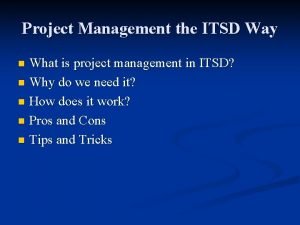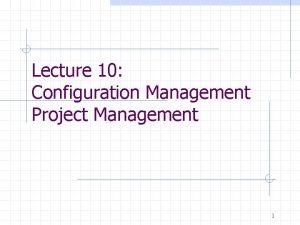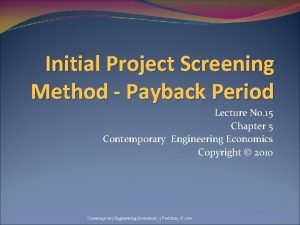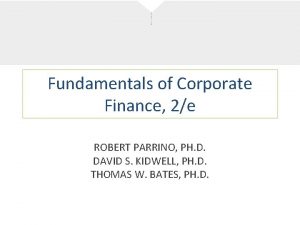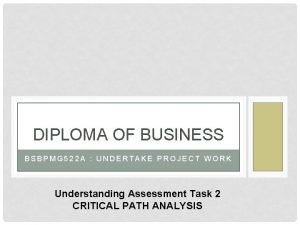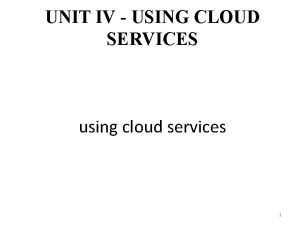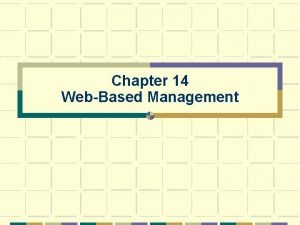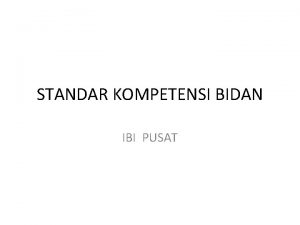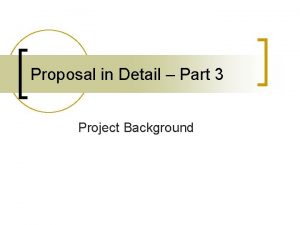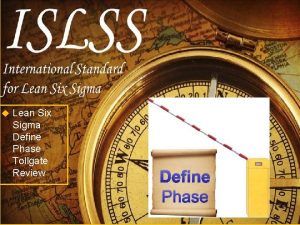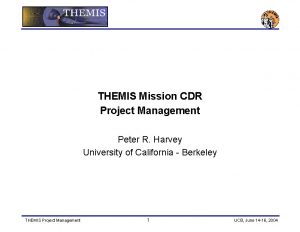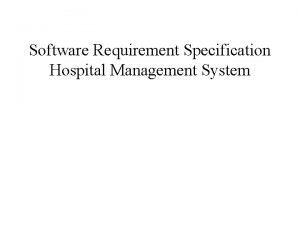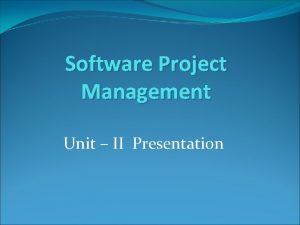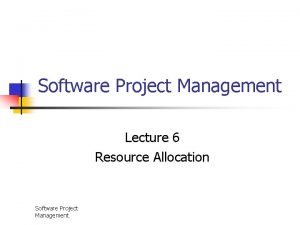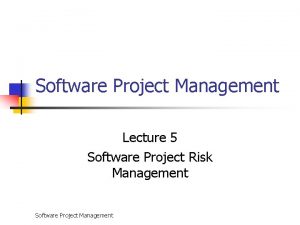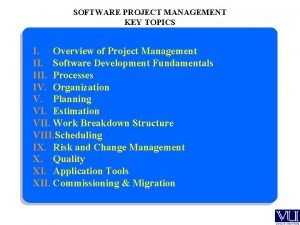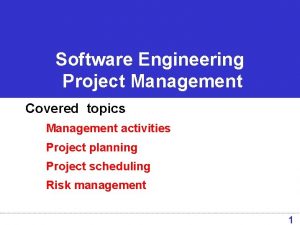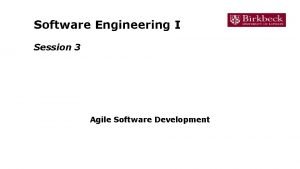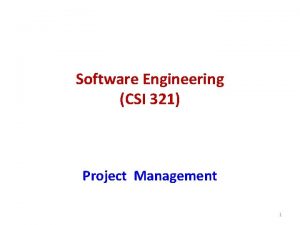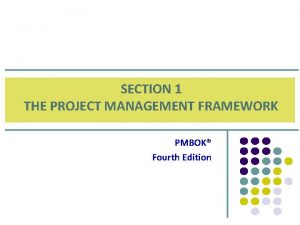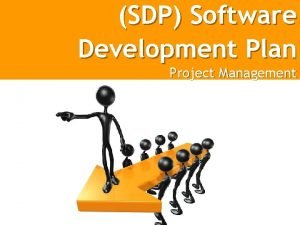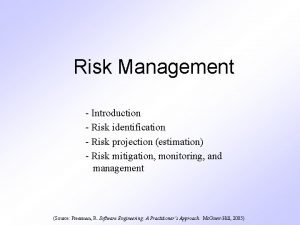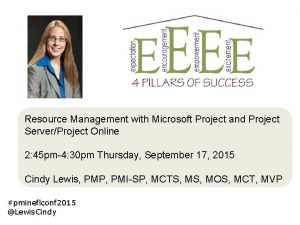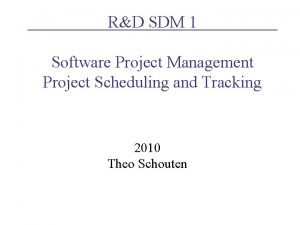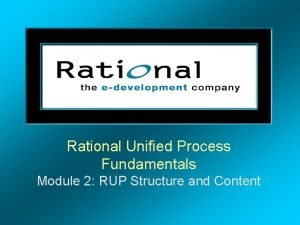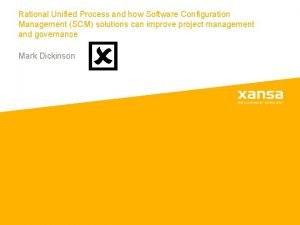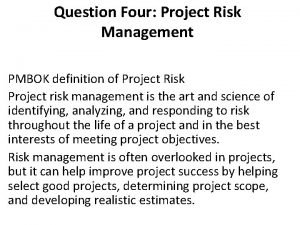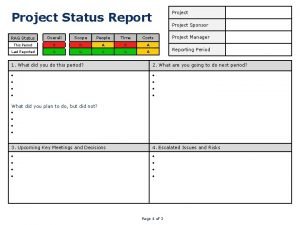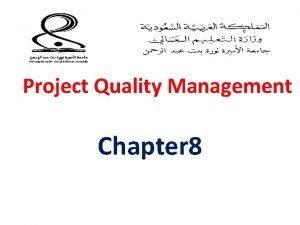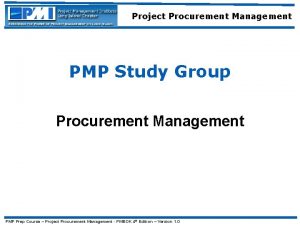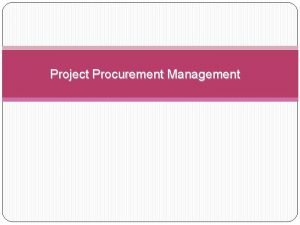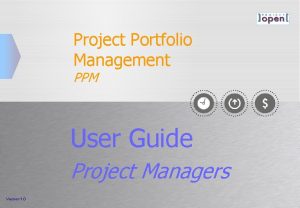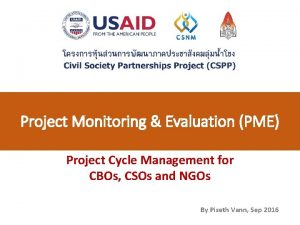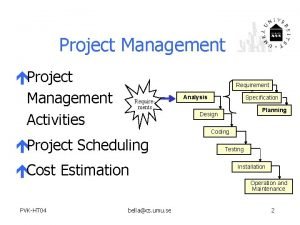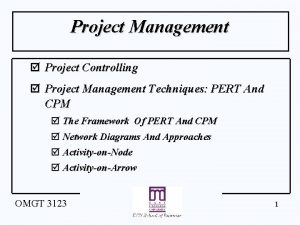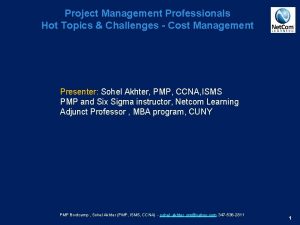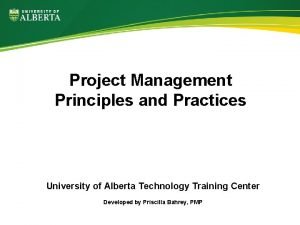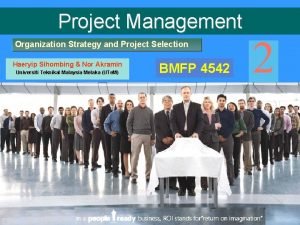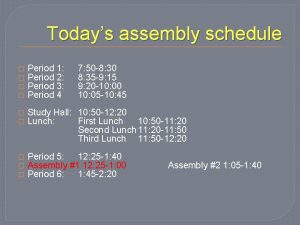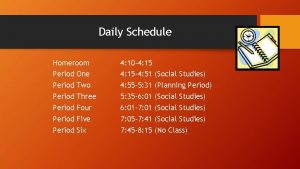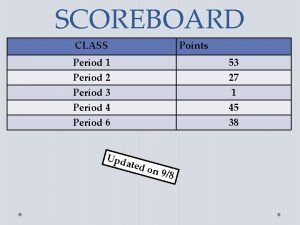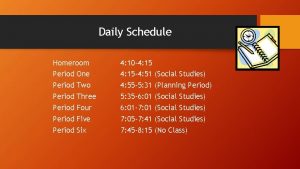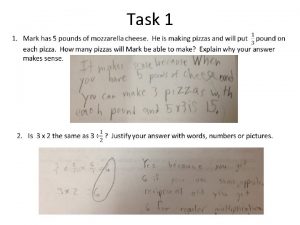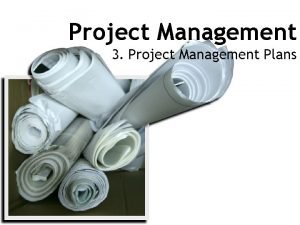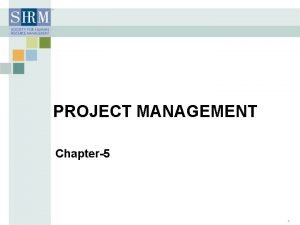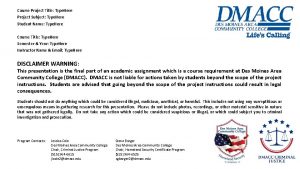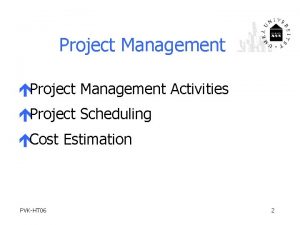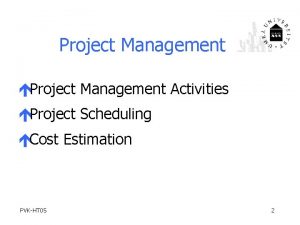Project Management Type period Type task Type task
























































































- Slides: 88

Project Management Type period Type task Type task 1

OVERVIEW PROJECT PLANNING and SCHEDULING The purpose of this lesson is to provide you with the knowledge to plan and supervise drafting and surveying activities for construction projects. Type text Type text 2

LEARNING OBJECTIVES T. L. O. Provided a project mission, written project specifications, finished design drawings, a completed bill of materials, a scientific calculator, a computer, software applications, a printer, and the references, implement project planning methods detailing all personnel, equipment, and materials necessary to accomplish the mission while establishing a defined duration for each subtask and the overall project / operation and graphically depict the schedule per the references. (1361 -SRVY 2004) 3

LEARNING OBJECTIVES E. L. O. (1). Given written project specifications, and blank writing paper, and references, develop an activities list per the FM 5 -412. (1361 -SRVY-2004 a (2). Given written project specifications, a completed activity list, and blank writing paper, and references, create a logic diagram per the FM 5 -412. (1361 -SRVY-2004 b) (3). Given written project specifications, a completed activity list, a completed logic diagram, scientific calculator, and blank activity estimate sheets, and references, estimate project activity 4 durations per the FM 5 -412. (1361 -SRVY-2004 c)

LEARNING OBJECTIVES E. L. O. (4). Given written project specifications, a completed activity list, completed activity estimate sheets, a computer, and automated software application, and references, create a Gantt chart per the FM 5 -412. (1361 -SRVY-2004 d) (5). Given written project specifications, a completed activity list, completed activity estimate sheets, a computer, and automated software application, and references, complete a logic diagram per the FM 5 -412. (1361 -SRVY-2004 e) 5

LEARNING OBJECTIVES E. L. O. (6). Given written project specifications, a completed activity list, a completed logic diagram, completed activity estimate sheets, scientific calculator, and completed activity estimate sheets, and references, create a completed project schedule per the FM 5 -412. (1361 -SRVY-2004 f) (7). Given a completed project schedule, computer, and automated software application, and references, automate a project schedule per the FM 5 -412. (1361 -SRVY-2004 g) 6

METHOD AND MEDIA è LECTURE, DEMONSTRATION, PRACTICAL APPLICATION è SLIDE PRESENTATION è DRY-ERASE BOARD è HANDOUTS 7

EVALUATION è CLOSE-BOOK è WRITTEN / PERFORMANCE è IRFs 8

SAFETY / CEASE TRAINING BRIEF è FIRE è TORNADO 9

QUESTIONS ? 10

CRITICAL PATH METHOD (CPM) èCPM is a form of analysis that is used for planning, scheduling, and controlling construction activities for a project from start to finish. èThe CPM requires a formal, detailed listing of all work related activities that make up the project. èAlso referred to as: n n n Construction Management Project Planning and Scheduling Critical Path Analysis 11

PRELIMINARY PLANNING èPreliminary planning is a quick overall picture of the project and the capacity of the unit to accomplish it. èServes as a guide for detailed planning. èIncludes site recon, preliminary material and equipment estimates, and procurement of critical items. 12

DETAILED PLANNING èDevelops an accurate estimation of work activities, materials, man-hours, and equipment requirements needed from start to finish. èDetailed planning includes: Reviewing project specifications and drawings. n Detailed estimates of resources. n Scheduling work activities. n Submitted in the form of a Gantt chart, Pert chart, Activity-on-the-Arrow logic diagram, or Activity-on-the-Node logic diagram. 13 n

Job Directive Format èThe job directive is the tasking of a unit to perform construction tasks, and draw needed materials to complete the project assigned. èJob directives vary in form and content. They are issued in one of two ways: n Verbally for simple projects. n Written for more complex projects. 14

Stages of Detail èJob directives can be in any one of three stages of detail: n n n Contain detailed plans and specifications. The more stable the conditions are, the more detailed the job directive becomes. May simply refer to standardized drawings, or automated software programs already published. May require preparation of complete plans and project specifications to be approved by higher headquarters. 15

Job Directive Information èMission: Exact assignment with all necessary details. èLocation: May be given, or left to the unit to select. èTime: Starting time and/or required completion date. èManpower: Additional manpower that is available. èEquipment: Additional equipment that is available. 16

Job Directive Information, cont. èMaterials: Source of and authority to request materials. èPriorities: Single priority for the whole project, or separate priorities for various portions of the project. èReports: Any required reports. (i. e. Weekly status report) èSpecial Instructions: Any additional information pertaining to the job that is requested. 17

? In what two forms may job directives be issued? In military construction, the planning process is divided into what two stages? 18

ACTIVITY LISTS (Brainstorming) An activities (task) list is a complete listing of all required work activities that must be performed from start to finish. èAn activity list can be brief, or as detailed as need be. The guiding factor to how much detail that is required is dictated by size and complexity of the project. èAn activity list must be developed mentally and on paper to determine actual activities and their interrelationships to each other. èThe most difficult step is your ability to think logically, and make a mental picture of the project in your mind. Brainstorming is needed with the assistance of the 1349, 1371 and 1361 Chief's, and the Project Officer. 19

ROUGH ACTIVITIES LISTING PROJECT: ONE LANE GRAVEL ROAD, 1500 FEET LONG, LEADING TO A CONCRETE STORAGE PAD THAT IS 32’-0” X 32’-0” IN SIZE. Activities “Topo” project site Lay gravel Order gravel Clear roadway Prefabricate forms Layout pad batter boards Pour concrete Check pad elevations Remove forms Establish road grades Set road alignments Place concrete forms Clear pad site Create project drawings Excavate pad footings Cure concrete Check Road grades 20 Perform “As-built”

Sequencing Activities è After you have developed your rough activity list in no specific order, you must now put the activities into a "logical" sequence to be performed. The finished activity list is broken down as follows: n “Activity Number” Column n “Activity” Column n "Immediately Proceeded By" (IPB) Column 21

Types of Activities è There are five types of activities associated with the development of a finished activities list. Keeping these activities in mind will help you in your logical thinking to develop the activity list on paper. n n n Starting activities. Preceding activities. Concurring activities. Succeeding activities. Lagging activities. 22

Sample Finished Activities List Activity Number 5 10 15 20 25 30 35 40 45 50 55 60 65 70 75 80 85 90 Activity "Topo" project site Create project drawings Order gravel Prefabricate forms Clear roadway Set road alignments Establish road grades Check road grades Lay gravel Clear pad site Layout pad batter boards Excavate pad footings Check pad elevations Place concrete forms Pour concrete Cure concrete Remove forms Perform "as-built" __ IPB None 5 None 10 25 30 35 15, 40 10 50 55 60 20, 65 70 75 80 45, 85 23

DEMONSTRATION “Going to Morning Formation” 24

? What is the process called to develop your activities list? : What are the five types of activities that are kept in mind when developing a finished activities list? 25

10 Min Break! 26

PLANNING DIAGRAMS èThe most important part of the CPM is the planning diagram. The planning diagram graphically shows the interrelationship between project activities. n n It provides a visual blueprint of the work activities that must be performed during construction. There are four types of diagrams that can be created. Each serves a specific purpose. 27

GANTT CHART èAlso known as a bar chart. èGantt charts are "time" oriented. èActivities are graphically shown on a calendar time scale, used primarily for small projects. èBars show an activities duration in its entirety, regardless of its dependency on other activities. èEffortless to construct, and are brief in format. 28

GANTT CHART ID 1 Task Name Topo project site 2 Create project drawings 3 Order gravel 4 Prefabricate forms 5 Clear roadway 6 Set road alignments 7 Establish road grades 8 Check road grades 9 Lay gravel 10 Clear pad site 11 Layout pad batterboards April 7 M T W T F April 14 S S M T W T F S April 21 S M T W T F S 29 S

GANTT CHART ID 1 2 Task Name TEC 1 -99 4, 1998 Qtr 1, 1999 Qtr 2, 1999 Aug Sep Oct Nov Dec Jan Feb Mar TEC 1 -99 10/6/98 2/1/99 TEC Core 10/6/98 3 4 Marine Unique 1/8/99 Marine Unique 1/11/99 2/1/99 TEC 5 -99 11/3/98 5 TEC Core Marine Unique 3/1/99 TEC Core 11/3/98 6 Qtr 3, 1999 Apr May Jun 2/5/99 Marine Unique 2/8/99 3/1/99 30

GANTT CHART DISADVANTAGES èDoes not give you the ability to visualize the exact progress of the project. èAnticipate delays or problems soon enough to correct them. èDoes not show detailed sequence of activities. èDoes not show "critical activities". èDoes not show precise effect of a delay or failure to complete an activity on time. 31

PERT CHART DIAGRAM èThe Program Evaluation and Review Technique (PERT) addresses probability, and is "event" oriented. èThis type of logic diagram is used primarily for research and development projects. 32

PERT CHART 33

Activity-On-The-Arrow Format èMore complex in its creation. èTendency to lead to confusion when trying to interpret it. èLeast desirable format to use because of these factors. 34

ACTIVITY-ON THE-ARROW CHART 35

Activity-On-The-Node Format èEliminates confusion, and allows you to adjust for problems that may arise during the construction of the project. èAON format is "activity" oriented. èThis is the primary format used for planning military construction, and especially used for large projects. 36

Activity-On-The-Node Uses èConstruction planning èMaintenance planning èProject Design èMilitary combat task planning èLogistics planning 37

AON Advantages èReduces risk of overlooking essential tasks. èProvides a blueprint for long-range planning. èShows activity interrelationships. èFocuses attention on critical activities. èAllows you to make timely decisions. èAllows you to manage manpower, material, and equipment resources more effectively. 38

AON Disadvantages èThe AON format does not solve engineering problems that may occur. èDoes not make planning decisions for you. èDoes not provide anything substantial to the actual construction of the project itself. 39

ACTIVITY-ON-THE-NODE 40

LOGIC DIAGRAM ELEMENTS After the activity relationships are identified, they are applied to a logic diagram. The standard format for a logic diagram is the "Activity-on-the-Node". The four basic elements are: èActivity Nodes èStart Nodes èFinish Nodes èPrecedence Arrows 41

ACTIVITY NODE 42

PRECEDENCE ARROWS 43

START AND FINISH NODES 20 Duration in days 44

? What type of planning diagram is “event” oriented? What type of planning diagram is “time” oriented? What type of planning diagram is “activity” oriented? 45

LOGIC DIAGRAMS èShown as a Critical Path Method (CPM) logic diagram. èShows accurate, timely, and easily understood picture of the whole project. èEasier to plan, schedule, and manage the sequence of required work activities. èGraphically shows the interrelationship of each work activity as they relate to the completion of the whole project. 46

CPM DIAGRAM LOGIC RULES èWhich activities start at the beginning of the project? (Starting) èWhich activities must be finished before the start of another? (Preceding) èWhich activities can start or finish at the same time as another? (Concurring) èWhich activities cannot begin until another is finished? (Succeeding) 47

DEMONSTRATION “Going to Morning Formation” 48

PRACTICAL EXERCISE 49

? What logic rules are used to create a logic diagram? What must all finishing nodes tie into? 50

10 Min Break! 51

ACTIVITY ESTIMATES èEstimating each activities required resources and duration times. èEstimated resources are: n Materials n Personnel n Equipment n Man-hours n Equipment-hours 52

MATERIAL ESTIMATES èWork Items èMaterials èQuantities èWaste Factors èTotal Material Requirements èBills of Materials 53

EQUIPMENT/PERSONNEL ESTIMATES èWork Items. (Activities) èMaterial Quantities. (Units of work) èWork Rate. (Man-hour Tables) èStandard Work Effort (Labor). (Quantity x Work Rate) èEfficiency Factor. (Represented as a Percentage) èTroop Effort (Total Labor Hours). (Standard Effort / Efficiency) èDuration (Hours, Days, Weeks, or Months). (Troop Effort / Crew Size) 54

DURATIONS èDurations are calculated based on: èAmount of Material Handled èAmount of effort put into using manpower èDuration Guidelines: èIncreasing equipment or Personnel = Reduced duration time of Activity. èDecreasing equipment or Personnel = Increased duration time of Activity. èIncreasing length of workday = Reduced duration time of Activity. èDecreasing length of workday = Increased duration time of Activity. èWorking on the weekend = Reduced duration time of the entire project. 55

? What are the two types of estimates? What effect does increasing equipment quantities have on the duration of an activity? 56

EARLY/LATE EVENT TIMES èAfter all duration's have been computed, you are now able to calculate each activities Early and Late event times. (Forward Pass and Backward Pass) n n Early Start (ES): The earliest time a activity can logically start. Early Finish (EF): The earliest an activity can finish without delaying follow on activities. (ES + Duration) Late Finish (LF): The latest an activity can finish without delaying the entire project. Late Start (LS): The latest time an activity can start without delaying the entire project. (LF - Duration) 57

ACTIVITY LIST WITH ESTIMATED DURATION'S Activity Number 5 10 15 20 25 30 35 40 45 50 55 60 65 70 75 80 85 90 Activity “Topo” project site Create project drawings Order gravel Prefabricate forms Clear roadway Set road alignments Establish road grades Check road grades Lay gravel Clear pad site Layout pad batter boards Excavate pad footings Check pad elevations Place concrete forms Pour concrete Cure concrete Remove forms Perform “As-built” IPB Duration None 5 None 10 25 30 35 15, 40 10 50 55 60 20, 65 70 75 80 45, 85 2 days 6 days 1 day 2 days 1 day 1 day 6 days 1 day 2 days 58

CRITICAL PATH & CRITICAL ACTIVITIES èAfter completing the event times, you can determine the "critical path" of the project and all of the "critical activities" by simple observation using the following guidelines: n The ES for an activity is the same as its LS. n The EF for an activity is the same as its LF. 59

DEMONSTRATION “EARLY/LATE EVENT TIMES” 60

PRACTICAL EXERCISE 61

? What are some of the types of resources that must be estimated for an activity? What is the term that is used to calculate the early event times for a project? What is the term that is used to calculate the late event times for a project? 62

10 Min Break! 63

EARLY START SCHEDULES èAn early start schedule, when joined with the logic diagram, graphically shows all of the planning information that is needed to manage the construction project from start to finish. èAny activity not on the "Critical Path" will contain some float. Float is any extra time that is available to complete an activity beyond its actual duration, without effecting the entire project. 64

EARLY START SCHEDULE FORMAT 65

FLOAT èTotal Float (TF): The entire amount of time that an activity can be delayed without delaying the entire project completion time. TF = LS - ES or LF - EF èInterfering Float (IF): Time that is available to delay an activity without delaying the projects entire completion time, but may delay the start of one or more non-critical activities. IF = LF -ES of following activity. (Use the smallest ES time) èFree Float (FF): Time that is available to delay an activity without delaying the start of any other activity, or the entire projects completion time. FF = TF - IF 66

Early Start Schedule Plotting Start by listing all activity numbers and their succeeding activities. Draw time brackets: Length is equal to LF-ES. (This will include total float if any) Note: ES times for starting activities will be day 1. All other ES will begin on the morning of the succeeding day. Label resource quantities in each appropriate time bracket. Only label the blocks for the activity’s normal duration. 67

RESOURCE ABBREVIATIONS SQUAD = SQ 7 -TON = 7 T SCRAPER = SC DOZER = DZ BACKHOE LOADER = BL EXCAVATOR = EX COMPACTOR = CP SHEEPS FOOT = SF SURVEY CREW = EA HMMWV = HV DRAFTSMAN = EA TRAM = TR GRADER = GD DUMP TRUCK= DT 68

Early Start Schedule Plotting (Cont. ) Interfering Float: When plotting IF work right to left starting at the ending bracket, shown as a “X”. IF will be plotted first. Any remaining blank/open blocks will be Free Float: FF will fall automatically into position after the IF is marked. Note: All finishing activities will only have FF and that the critical path will NOT have any float. The final step is to total all resources for each day and list them at the bottom of the schedule. 69

DEMONSTRATION “EARLY START SCHEDULE” 70

71

10 Min Break! 72

PRACTICAL EXERCISE 73

? What is float? What is interfering float? What is free float? 74

10 Min Break! 75

MICROSOFT PROJECT è Automated Program è Planning and Scheduling èDoes not make decisions for you! è You provide inputs è Activities èResources èDuration è Project èBeginning èFinish 76

MS PROJECT – INITIAL SETTINGS Date, Time, Duration Settings è TOOLS Menu èOPTIONS Dialogue Box èView Tab èDate Format èCalendar Tab èDay of the week work begins èTime of the day work begins and ends èHours work / day and week èSchedule Tab èDAYS – set Activity Duration, time unit format èHOURS – set Work Duration èNOTE: Slack time = 0; allows MS Proj ect to calculate FLOAT TIMES 77

MS PROJECT – INITIAL SETTINGS Date, Time, Duration Settings, cont. è Tools Menu èChange Working Time èSet Working Days èSet Non-Working Days èWeekends automatically considered èHolidays 78

MS PROJECT – RESOURCE SETTINGS T/O (Manpower) T/E (Equipment) è VIEW Menu èRESOURCE SHEET èResource Name èResource Initials èMaximum Units èUnit, Company, Platoon, Section èGANTT CHART 79

MS PROJECT – ACTIVITY INFORMATION PROJECT ACTIVITY INFORMATION INPUT è VERTICAL DISPLAY DIVIDER èPick, Drag all the way to the right to view entire Activity sheet è Type Name of first Activity èLeft Arrow Key èColumn èDuration èColumn èStarting Date èColumn (Left Arrow Key x 2) èPredecessors 80

MS PROJECT – ACTIVITY INFORMATION, cont. PROJECT ACTIVITY INFORMATION INPUT èResource information – leave blank èRepeat previous procedures for the remaining Activities in your list. èSkip “STARTING DATES”, they will be automatically calculated due to IPB èINSERT Menu èResource Assignment Dialogue box èType of Resource èQuantity èUnits èRepeat for all Activities èClose 81

MS PROJECT – EDITING PLANNING DIAGRAMS Activity Information Inputs = Automatic Planning Diagram Creation èGANTT Chart èPick, Drag Vertical Divider all the way to the left so the entire GANTT Chart can be viewed èPick FORMAT Menu èSelect BAR STYLES Option èNAME Column èPick PROGRESS èPick CUT ROW (eliminates clutter for printout) èDo not delete TASK èINFORMATION Display Format èPick TASK Name 82 èPick TEXT Tab

MS PROJECT – EDITING PLANNING DIAGRAMS, cont. èPERT Chart èChart created is not in logical sequence èDrag and Drop Activity Node so the Precedence Arrow Logically connect each node èBegin Arranging èStarting Activities first then remaining Activities to the last èNote: PERT Chart does not have a Start or Finish Node 83

MS PROJECT – PROJECT REPORTS èSupplements Planning Diagrams with: èPick VIEW in the Menu Bar èRESOURCE USAGE èRESOURCE GRAPHS èREPORTS èOVERVIEW èTop-Level Tasks èCritical Tasks èWorking Days èCURRENT ACTIVITIES èUnstarted Tasks èASSIGNMENTS èWho does what èWho does when 84

DEMONSTRATION 85

PRACTICAL EXERCISE 86

? How does Microsoft Office Project calculate float times? Does a PERT Chart have a Start and Finish Node? 87

SUMMARY èCritical Path Method in project planning and scheduling èActivities List èBrainstorming èSequencing èCPM Logic Diagram èActivity Resources èEarly Start Schedule èMS Project Production 88
 Importance of software project management
Importance of software project management What is project work
What is project work Cynthia lightfoot
Cynthia lightfoot A&p flix activity: resting membrane potential
A&p flix activity: resting membrane potential Is hyperpolarization the same as refractory period
Is hyperpolarization the same as refractory period Critical period vs sensitive period
Critical period vs sensitive period Critical period
Critical period Critical period vs sensitive period
Critical period vs sensitive period This period lasted from approximately 1775 - 1825
This period lasted from approximately 1775 - 1825 29 electrons period 4
29 electrons period 4 Period of activism 1970 1972
Period of activism 1970 1972 Stability period vs measurement period
Stability period vs measurement period Trustee period and royal period
Trustee period and royal period Ad vs bce
Ad vs bce The role of project management in achieving project success
The role of project management in achieving project success Modern project profiles in software project management
Modern project profiles in software project management Cost duration graph
Cost duration graph Introduction to project management kathy schwalbe
Introduction to project management kathy schwalbe What is strategic assessment in software project management
What is strategic assessment in software project management Types of project audit in project management
Types of project audit in project management Ms project agile
Ms project agile Project termination
Project termination Tiered task bias task
Tiered task bias task Asset management vs project management
Asset management vs project management Configuration management in project management
Configuration management in project management Basic principles of cost management in project management
Basic principles of cost management in project management Configuration item
Configuration item Project integration management processes
Project integration management processes Discounted payback period formula
Discounted payback period formula Payback period formula
Payback period formula Payback period method
Payback period method Bsbpmg522a undertake project work assessment task 1
Bsbpmg522a undertake project work assessment task 1 Gradle task 'wrapper' not found in project
Gradle task 'wrapper' not found in project Pyramid levels of management
Pyramid levels of management Management pyramid
Management pyramid Middle level management
Middle level management Exploring online planning and task management
Exploring online planning and task management Java dynamic management kit
Java dynamic management kit Kompetensi inti bidan
Kompetensi inti bidan Thinktime task management
Thinktime task management The project background
The project background Integrating metrics within the software process
Integrating metrics within the software process Theoretical background example
Theoretical background example Why dark chocolate melts faster
Why dark chocolate melts faster Cmmi project management
Cmmi project management Project procurement management lecture notes
Project procurement management lecture notes Vehicle management system login
Vehicle management system login Project management course university of pretoria
Project management course university of pretoria Voice of the customer six sigma
Voice of the customer six sigma Pdr cdr project management
Pdr cdr project management Pdr cdr project management
Pdr cdr project management The management spectrum (3 p’s) are
The management spectrum (3 p’s) are Risk management in telecommunication projects
Risk management in telecommunication projects Hospital management system er diagram
Hospital management system er diagram Cash flow forecasting in software project management
Cash flow forecasting in software project management Software project management resource allocation
Software project management resource allocation Software project risk
Software project risk Software project management topics
Software project management topics Activities covered by software project management
Activities covered by software project management Crystal method project management
Crystal method project management Csi in project management
Csi in project management Security analysis and portfolio management project
Security analysis and portfolio management project Security analysis and portfolio management project
Security analysis and portfolio management project Project management framework pmbok
Project management framework pmbok Sdp software development plan
Sdp software development plan Risk projection
Risk projection It infrastructure project management best practices
It infrastructure project management best practices Office 365 resource management
Office 365 resource management Sdm project management
Sdm project management Rational unified process artifacts
Rational unified process artifacts Rup project management
Rup project management Pmbok risk definition
Pmbok risk definition Project status rag
Project status rag Example of project scope statement
Example of project scope statement Risk response types
Risk response types Pmbok quality assurance vs quality control
Pmbok quality assurance vs quality control Project quality management definition
Project quality management definition Project procurement management definition
Project procurement management definition Project procurement management process
Project procurement management process Hp ppm project management user guide
Hp ppm project management user guide Project monitoring cycle
Project monitoring cycle Trends in project portfolio management
Trends in project portfolio management Project requirements
Project requirements Pert techniques in project management
Pert techniques in project management Bac pmp
Bac pmp University of alberta project management
University of alberta project management Project management closing phase
Project management closing phase Project management funny quotes
Project management funny quotes Project portfolio management matrix
Project portfolio management matrix

